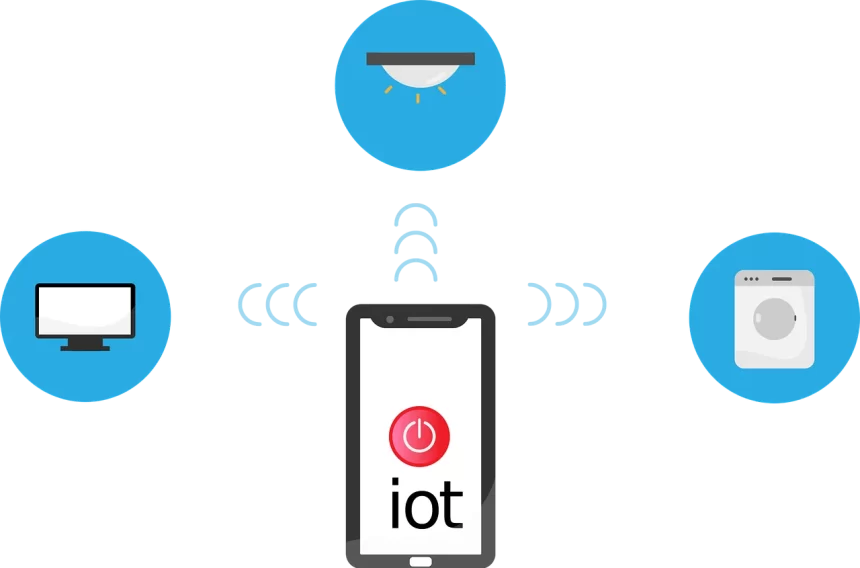Manufacturing is currently undergoing the fourth industrial revolution with innovation-based applications like IoT, AI, and robotics that grow the sector. Research has indicated that manufacturing companies will spend $70 billion on IoT solutions by 2020. Various manufacturers are deploying IoT devices to use predictive maintenance and advanced data analytics to boost profitability, usability, and market contributions.
The number of smart devices projected to hit 31 billion by 2020 and rise to 75 billion by 2025. Organizations must understand how these gadgets transform conventional working methods into complex and interconnected systems. Through the use of IoT, IoT sensors will limit the challenges in development and the supply chain.
Manufacturers and industrialists have a crucial opportunity to screen and automate enormous numbers of complex production-related processes in each area. Although systems have tracked the plant’s progress, the industrial IoT (IIoT) technology offers managers unmistakably more nuanced data.
- Product Development
In an assembly cycle, defects and insufficiency in the final product increase spending and overburden workers. Producers may use the IIoT features to mitigate these problems, and one such is Digital Twins. In a digital form, it imitates the evolving product. By retrofitting sensors, manufacturers gather information from each device about the entire working system of their gear and the predicted yield. The data obtained from the digital replica enables decision-makers to analyze the system’s efficiency, effectiveness, and accuracy. It also helps to find potential bottlenecks in their product, which encourages managers to create a better product version.
- Predictive Repairing
IFTTT, cloud/API, or legacy systems manufacturers may obtain necessary maintenance information by interfacing IoT-driven gadgets. They have distinctive sensor points (temperatures, vibration, voltages, flows, and so on) to various gadgets. This type of data makes the process state of the hardware calculated, warning signs to be determined, transmitted, and necessary repair processes to be activated.
IoT turns maintenance in this way into a constant and automated practice that anticipates failure a long time in advance. Also, it facilitates cost savings over conventional preventive steps as the motions are made precisely when they are critical. Managers can identify plant machinery that requires fixing by having legitimate information in time. Plus, it helps organize upkeep activities and maintains networks online while the staff is still conducting the task. IoT can increase the life of machinery, add to plant safety, and reduce the dangers of mishaps that adversely affect the environment.
- Facility Management
In manufacturing equipment, the use of IoT sensors empowers condition-based maintenance alerts. There are numerous essential machine tools designed to function within a specific range of temperature and vibration. IoT sensors can virtually screen machines when the hardware strays from its accepted parameters and send a notification. Manufacturers may preserve energy, reduce machine downtime, and improve operating efficiency by maintaining the machinery’s authorized workplace environment.
- Supply Chain Management
In real-time, IoT devices monitor and follow the inventory status. By getting real-time insights into accessible assets, producers can screen their supply chain. It includes data identified by the Work in Progress, the hardware selection, and the date of delivery of the raw materials needed. Besides, some IoT providers provide the incorporation of their IoT solutions with the existing manufacturers’ ERP frameworks. This requires wiping out the need for manual operational documentation. It offers cross-channel visibility into different departments and allows partners to inspect the progress underway. This ultimately decreases spending due to mismanagement and lack of analysis in the business.
- Asset Tracking
Increasingly, asset practices will be executed by manufacturing companies in general. IoT innovation makes it conceivable to acquire knowledge about real-time assets. It also helps make responsible decisions, coupled with creating native web and smartphone applications for iOS or Android. The significant role of pursuing lies in identifying and monitoring such essential resources as the supply chain sections. Such apps will dramatically streamline logistics, keep job uploads in progress, and report robberies and violations. IoT-based asset monitoring helps manufacturers quantify mobile equipment elements’ usage and initiate steps to abbreviate idle time and increase use.
- Safety and Security
As IoT integrates big data analysis, employees’ overall safety and security can be enhanced. By tracking primary health and safety performance indicators (KPIs), like the number of accidents, injury rates, and near misses. Efficient monitoring, in this way, ensures better security. If any, slacking pointers can be discussed to provide sufficient health, safety, and environment (HSE) redress.
Conclusion
IoT continuously enhances connectivity and advances assembly processes, with the continuous development of more software and solutions. Microsoft announced that it is uniting with the BMW Group to change digital production efficiency with an IoT open manufacturing platform. Obviously, with this current, many are starting to take advantage of this ground-breaking advancement. Thus, with growing profitability and expertise and gaining a deeper understanding of their clients’ behavior trends and needs.










